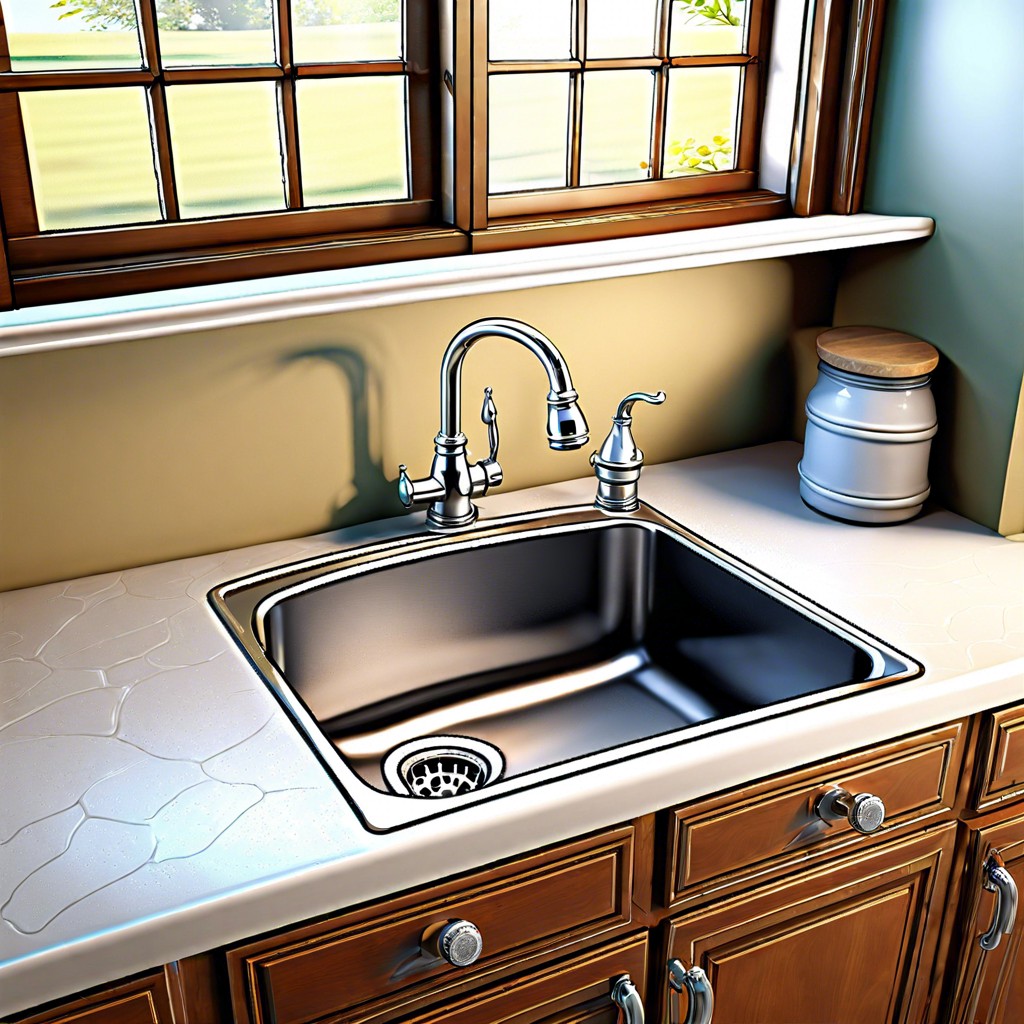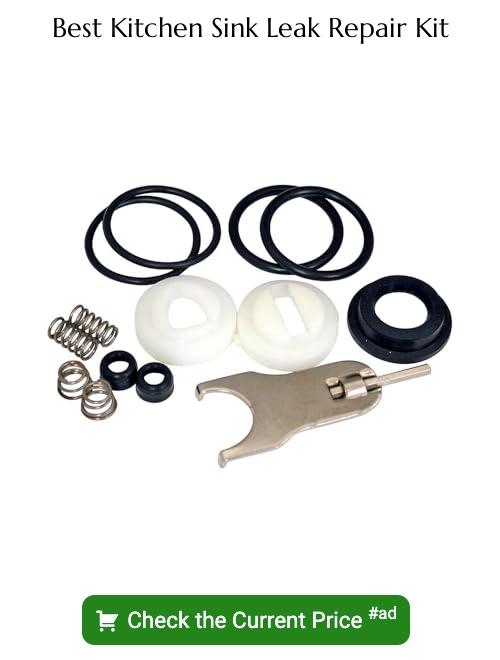Last updated on
Discover the common causes of leaks under your kitchen sink and learn how to fix them with simple steps.
Key takeaways:
- Identify the exact point of leakage to pinpoint the source.
- Differentiate between leaks and condensation to determine the issue.
- Gather necessary tools like pliers, wrenches, sealants, and Teflon tape.
- Take safety precautions by shutting off water, electricity, and wearing protective gear.
- Call a professional plumber for complex issues and substantial water damage.
What's Inside
Identifying the Exact Point of Leakage

Pinpointing the source of a leak sets the stage for a precise fix. Start by clearing the cabinet space to gain full access to the plumbing. Dry the pipes with a towel to eliminate residual water. Next, run the faucet, observing where droplets first appear.
Leaks typically emerge at joints or connections; however, don’t rule out cracks along pipes or in the sink basin. Use a flashlight for better visibility. Spotting a continuous trickle indicates a compromised water supply line, while a drip pattern suggests a drain issue.
In the case of garbage disposals or water filters, scrutinize their attachment points. Water paths can deceive, so trace droplets upward to confirm their origin. A keen eye for detail at this stage can save hours of work and prevent unnecessary repairs.
Distinguish Between Leaks and Condensation
Before diving into repairs, it’s crucial to determine if you’re dealing with a leak or mere condensation. Condensation often occurs when humid air meets the cold surface of pipes, resulting in water droplets that can mimic the appearance of a leak.
A tell-tale sign of condensation is the presence of water droplets on the exterior of pipes, especially when the weather is hot and humid. This type of “sweating” is more frequent during summer months or in particularly moist environments and usually isn’t cause for concern.
In contrast, a leak is usually localized and will continue to drip or stream from a specific point, regardless of external humidity levels. Pay attention to consistent wet spots or a puddle directly underneath pipes. If you notice water damage on the cabinet floor or see water dripping when you run the tap, it’s likely a leak.
Another way to differentiate is by drying the area thoroughly and then running water through the sink. If water reappears from a specific point, it’s indicative of a leak rather than condensation. Proper identification is key to addressing the issue effectively and ensures you don’t undertake unnecessary repairs.
Tools Needed for DIY Leak Repair
Embarking on a journey of DIY leak repair begins with assembling the right arsenal. Picture a plumber’s tool belt; your kitchen floor needs a similar layout albeit less extensive. For starters, you’ll want to have channel-lock pliers on hand. Their adjustable jaws are perfect for gripping pipes and fittings of various sizes.
Next, a reliable wrench, yes—the one that partners with nuts and bolts throughout your home. It will serve you well here, too. We’re talking adjustable wrenches that can adapt to the situation at hand. When you’re feeling around under that sink, you’ll want the versatility on your side.
Now, onto sealants. Plumbers putty or silicone caulk can be the problem solver for those pesky, minor leaks. These are indispensable for creating water-tight seals. Be cautious, though, putty is not a one-size-fits-all solution; it’s a temporary fix, not suitable for repairing leaks on pressurized water lines.
Finally, Teflon tape—a thin white tape that wraps around the threading of pipes to provide an extra layer of leak protection. This silent hero can often be the difference between a leaky mess and a dry cabinet.
In addition to these primary tools, ensure you have some rags for cleanup and a bucket for catching any residual water. Blocks of wood or rubber shims might also be useful for adjusting the alignment of pipes—if that’s where the trouble lies. With these tools at the ready, you’re set to tackle most common under-sink annoyances.
Safety Precautions While Repairing a Leak
Before diving into the repair, ensure your safety by following these guidelines:
First and foremost, shut off the water supply to prevent any unexpected geysers or soaking yourself – and your kitchen. This can typically be done by turning the valves located under the sink clockwise.
Next, don’t neglect electrical safety. If there’s any risk that the leak could come into contact with electrical outlets or your garbage disposal, turn off the power at the circuit breaker. Water and electricity are a dangerous mix.
Keep a bucket handy to catch any residual water that may spill out when you disassemble pipes. This can help prevent further water damage and give you a clearer view of the problematic area.
If you’re using any tools or chemicals, like plumber’s putty or sealant, read the instructions carefully. Proper handling and usage are key to avoiding unfortunate mishaps.
Lastly, wear protective gear as necessary. Gloves can protect your hands from sharp edges and any substances that could irritate your skin. If you’re working in a cramped space, eye protection is a wise precaution against any debris that could fall.
By prioritizing safety, not only do you protect yourself, but you also create a conducive environment for a successful DIY fix.
When to Call a Professional Plumber
Tackling a leak under the kitchen sink might seem straightforward, but sometimes the issue runs deeper than a loose connection or a worn-out washer. If you’ve gone through the DIY steps without success, it’s time to consider bringing in the experts. Complex plumbing problems require professional insight. A persistent leak could signal deteriorating pipes, requiring complex replacements that go beyond surface fixes.
Substantial water damage is another red flag. If you notice warped cabinetry or the buildup of mold and mildew, these are indicators of a problem that’s potentially hazardous to your health and home. In such cases, a plumber can assess the extent of damage and take necessary remedial actions.
Moreover, if your kitchen plumbing is old or you’re unsure about your home’s plumbing history, a professional can provide a comprehensive evaluation, ensuring your system complies with current standards and is free from materials like lead or polybutylene.
In the end, if you ever find yourself in doubt, err on the side of caution. Plumbing errors can be costly, and a professional plumber ensures the job is done safely and effectively, saving future headaches and expenses.





